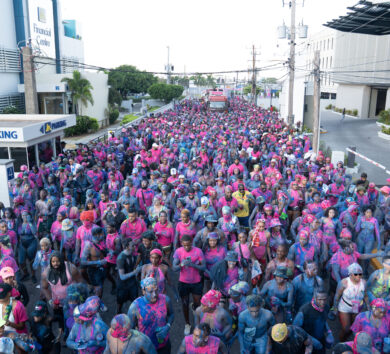

The month of January is here again and will this month features several health observances.
One of those observances is Glaucoma Awareness Month and Our Today here shares with you some signs, symptoms and treatments for one of the leading causes of blindness.
Glaucoma is a group of eye conditions that damage the optic nerve, the health of which is vital for good vision. This damage is usually caused by abnormally high pressure in your eye. Although glaucoma can take root at any age, it is more so common in older adults.
There are several forms of glaucoma including pigmentary glaucoma, neovascular glaucoma, traumatic glaucoma and secondary glaucoma, with open-angle being the most common form of the disease. This is when the drainage angle formed by the cornea and iris remains open, but the trabecular meshwork is partially blocked.
Signs and Symptoms

Glaucoma does not usually present signs and symptoms. It tends to develop slowly and is not noticed by most of its victims until it is quite advanced or during a routine eye check up. Any sign and symptom that may occur is dependent on the type and stage of the condition.
General symptoms (especially for open-angle glaucoma) include:
- blurred vision
- rainbow coloured circles around bright lights
- intense eye pain
- nausea and vomiting
- a red eye
- a headache
- tenderness around the eyes
- eye that looks hazy (particularly in infants)
- eye pain
- patchy blind spots in eye
Treatment

While the damage caused by the condition cannot be reversed, treatments and regular check ups can aid in slowing down or preventing vision loss, especially if realized in the early stages,
Glaucoma is treated through Intraocular Pressure, in other words lowering the eye pressure. In addition to this, other forms of treatment may be administered depending on the stage or type. This includes oral medications, prescription eyedrops, surgery, laser treatment or a combination of any of these.
Oral Medications
If eyedrops prove to be ineffective, your doctor may prescribe oral medication, which is usually a carbonic anhydrase inhibitor. Side effects may include depression, upset stomach, kidney stones, tingling in fingers and frequent urination.
Prescription Eyedrops
These include beta blockers, rho kinase inhibitor, prostaglandins, alpha-adrenergic agonists, miotic or cholinergic agents and carbonic anhydrase inhibitors.
Surgery and Laster Therapy
Laser Therapy – this is where a small laser beam is used to open clogged channels in the trabecular meshwork. It my take some time for the full effect before the full effect of this procedure is realised. This `procedure is usually done on those who have open-angle glaucoma.
Filtering surgery – an opening is made in the sclera (white part of the eye) and part of the trabecular meshwork is removed.
Drainage Tubes – a small tube shunt is placed in your eye to drain away the excess fluid to lower eye pressure.
Minimally Invasive Glaucoma Surgery (MIGS) – this procedure lowers your eye pressure.







Comments